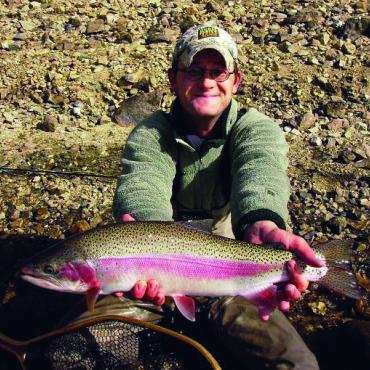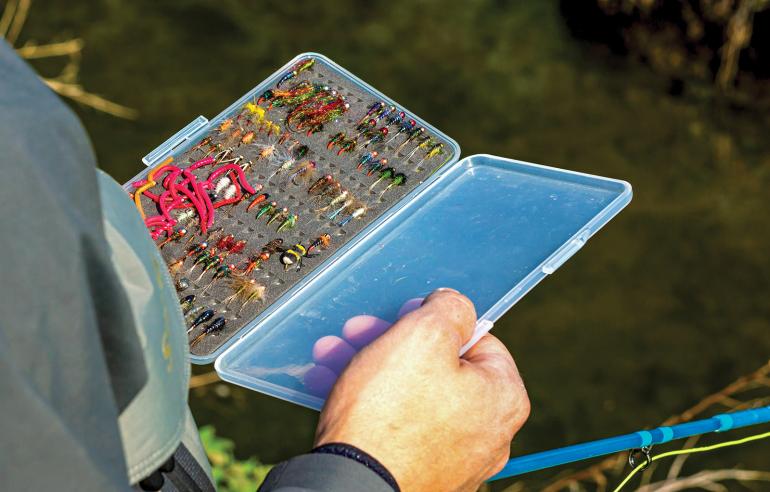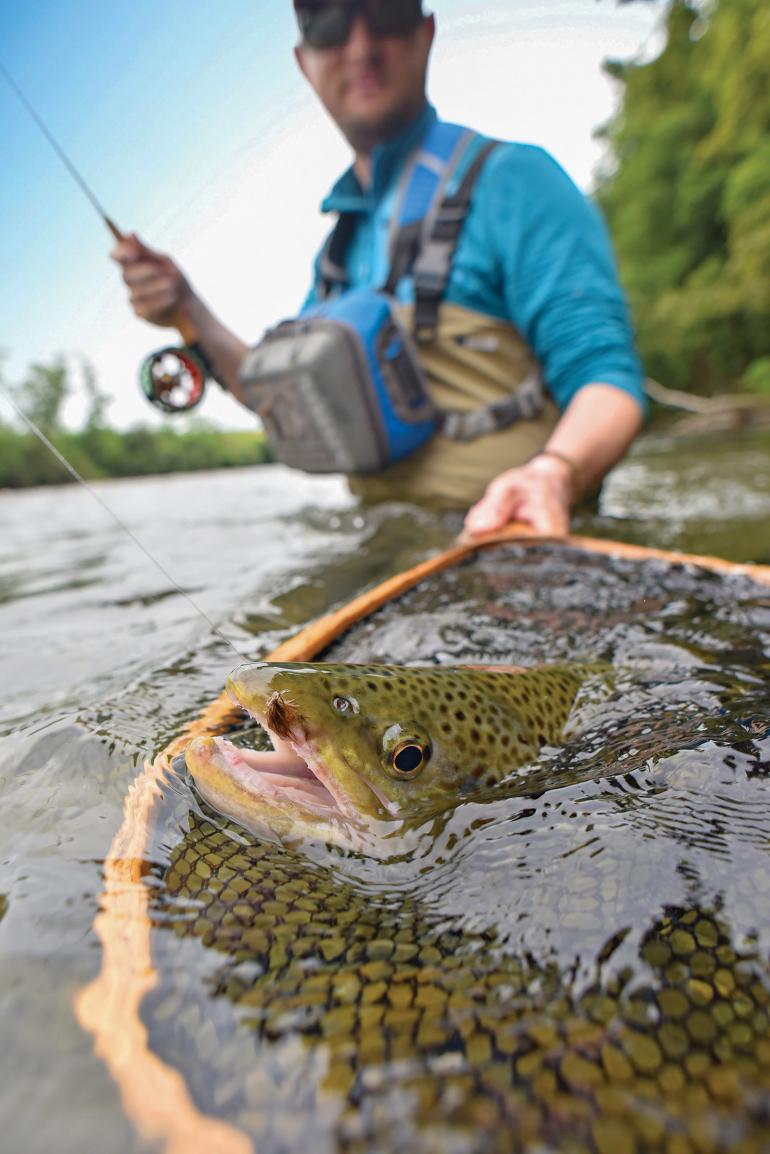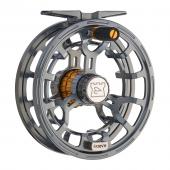Fly Food
A basic lesson in entomology.
If ever there was a mashup of biological fields for the purpose of sheer recreation, fly fishing for trout would be the crock-pot, and ichthyology and entomology would be the primary ingredients. When these two highly-specialized and complex disciplines come together, it’s no wonder why the fly selections at any given fly shop can border on overwhelming. The following is a basic list of popular fly patterns, and the bugs or other aquatic critters that they imitate.
Midges
Dries: Buzz Ball, Griffith’s Gnat, Caviar Midge
Sub-surface: Zebra Midge, Blood Midge, Serendipity, ShopVac, Three-Dollar Dip
“Midge” is a broad-brush term for tiny, two-winged, mosquito-like insects that live in and around water. Adult midges and midge larva are the trout equivalents of a bowl of peanuts and a bag of chips. Trout eat midges year-round, provided that the air and water temperatures are conducive to hatches. Adult midges have short wings that tend to fray quickly during their mating practices. These clumsy fliers inevitably end up on the water’s surface, forming easily recognizable clusters. If fish are seen sipping these clusters, tie on one of the dry or cluster-type patterns. If not, sub-surface patterns are always effective.
Mayflies
Dries: Adams, Purple Haze, Comparadun, PMD
Emergers: Quigley Cripple, Partridge Soft-Hackle, RS2
Nymphs: Pheasant Tail, Hare’s Ear, Psycho May, Perdigon
A seemingly infinite number of mayfly species live in and around the rivers and streams of southwest Montana. Due to their abundance, these insects are a staple in the daily trout diet. Mayflies are easy to identify by their upright, sail-like wings when they are resting on the surface.
If you find yourself in the middle of a mayfly hatch, keep in mind their vulnerability during the hatching process. Emerging bugs are trapped in the surface film as they struggle free from their nymphal shucks. Once the process is complete, the mayfly is in the full adult stage. For anglers, it can be confusing as to which stage is enticing fish to eat. If half a dozen presentations with adult dry patterns don’t conjure up a bite, it’s probably time to switch to an emerger, cripple, or possibly even a nymph.
Caddisflies
Dries: Elk-Hair Caddis, X Caddis, Goddard Caddis, Micro-Stimulator
Nymphs: Soft-Hackle CDC Nymph, Holy Grail, Olive Soft-Hackle, Bead Head Hare’s Ear
Caddisflies, depending on the species, hatch in southwest Montana from late April through mid-October. On many area rivers and streams, caddis are a significant source of nutrition for resident trout. Caddis are easily identified by the fluttering “dance” of the adults above the water’s surface on warm evenings. This behavior is the mating swarm. Shortly thereafter, the female caddis fall onto the water, lay eggs, and die.
Adult caddisflies have swept-back, teardrop-shaped wings. These wings form a tent-like structure over the insect’s bodies, often imitated by an elk-hair wing in fly patterns. Caddisflies can range in color from tan, to brown, to olive, and even bright to burnt orange. In terms of timing, the caddis bite usually begins with the Mother’s Day hatch and continues throughout the summer.
Stoneflies
Dries: Water Walker, Chubby Chernobyl, Stimulator
Nymphs: Pat’s Rubber Legs, Montana Nymph, Bitch Creek
Numerous species of stonefly are prolific in most southwestern Montana rivers and streams. These insects are big, buggy morsels, and easily identified. A stonefly has three sets of legs along the length of its body, a bifurcated tail, long swept-back wings, and a set of long, horn-like antenna extending from its head. Both the adult and nymphal stage look as if they crawled out of a B-grade sci-fi flick. The most pursued member of the stonefly family is the giant salmonfly, which hatches from mid- to late June and into early July.
The Pat’s Rubber Legs nymph is an almost foolproof pattern to imitate the nymphal stage of most stonefly species. When imitating the adult stonefly, it is important to have good range of sizes and colors of chubby or stimulator patterns in order to closely match what the fish may be feeding on.
Terrestrials
Dries: Trina’s Hopper, Dave’s Hopper, Bionic Ant, Quick Sight Beetle
For the most part, trout are opportunists, and often rely on non-aquatic insects as staples in their diets. Grasshoppers are, of course, the most common and popular form of terrestrial pattern during mid-summer. If the fish become picky, don’t hesitate to try an ant pattern or even a beetle. Terrestrial patterns are often best used during the mid-summer months when the streamside banks are heavy with grass.
Kurt Dehmer owns Durty Kurty’s Guide Service in Bozeman.












